【编者按语】
每年有许多硕士生、博士生涉足多媒体与AI安全,然而资料浩瀚、难以取舍,初学者往往摸不清头绪。针对这个问题,我们专门开设了一个栏目叫做“极简综述”,极简介绍某一方向的来龙去脉,相信这些他们一定可以对初学者有促进作用,帮助新一代年轻人成长,也是我们教育工作者义不容辞的使命!
JPEG隐写是多媒体安全研究中的一个重要方向,本期特地邀请集美大学的关晴骁老师,做关于JPEG隐写的极简综述,让初学者了解JPEG隐写发展以来的一些重要文献,便于大家找到快速入门的线索。其中,可能会有重要工作遗漏,欢迎本方向的科研工作者提出并补充,后续我们将进一步对本文进行更新(本文于20210330第一版,20210407得到修订)。

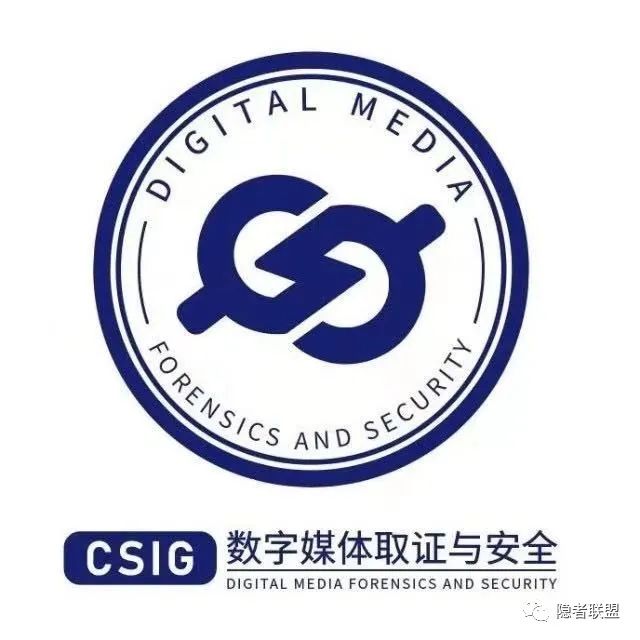
“极简综述”计划已纳入“中国图象图形学会-CSIG数字取证与安全专委会”的学术活动计划。感谢所有撰稿人的支持!
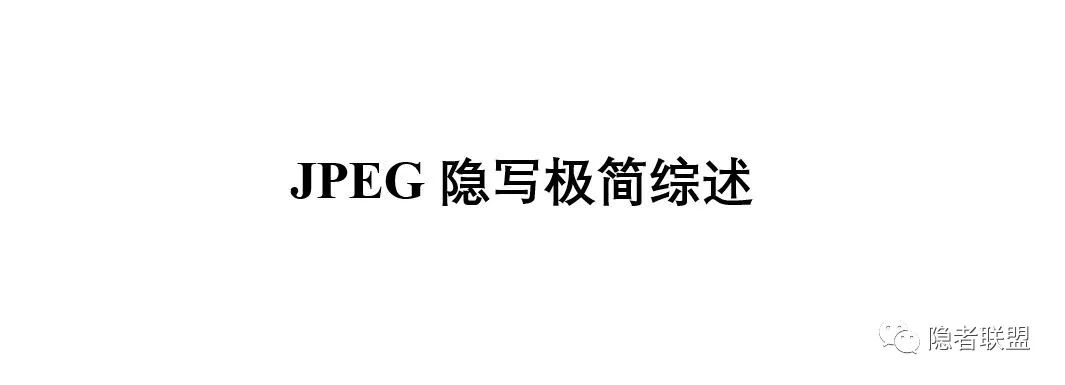
作者简介:
关晴骁,于2006年毕业于湘潭大学自动化系,获学士学位,2013年毕业于中国科学技术大学自动化系,获博士学位。2013年~2018年,在中国科学院信息研究所任助理研究员、副研究员。2018年11月至今,任集美大学计算机工程学院副教授,主要从事多媒体安全领域的隐写术与隐写分析研究,在相关期刊和学术会议发表多篇论文,承担相关项目多项。
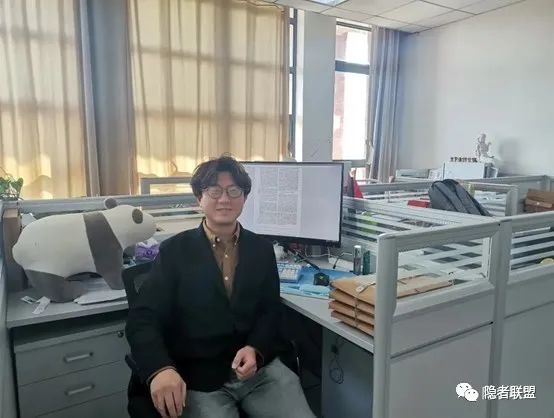
JPEG图像隐写极简综述
集美大学 关晴骁
(20210331上大王子驰、复旦钱振兴做部分补充修改,20210403信工大罗向阳做部分修订)


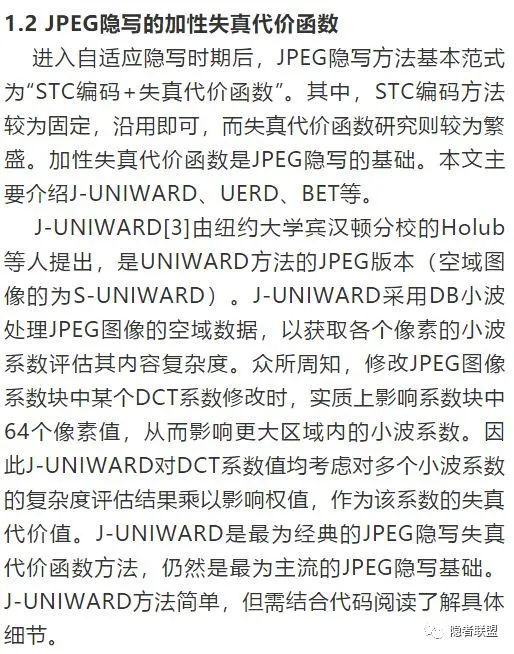
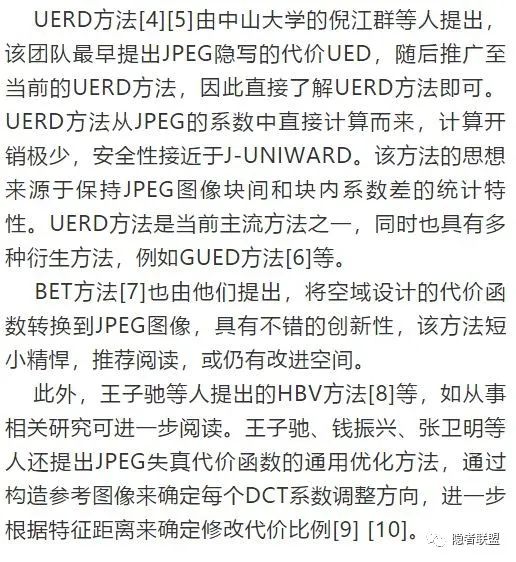
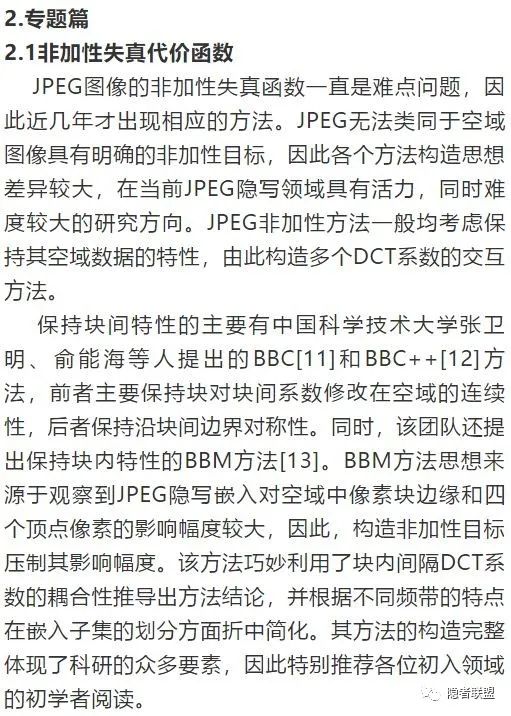
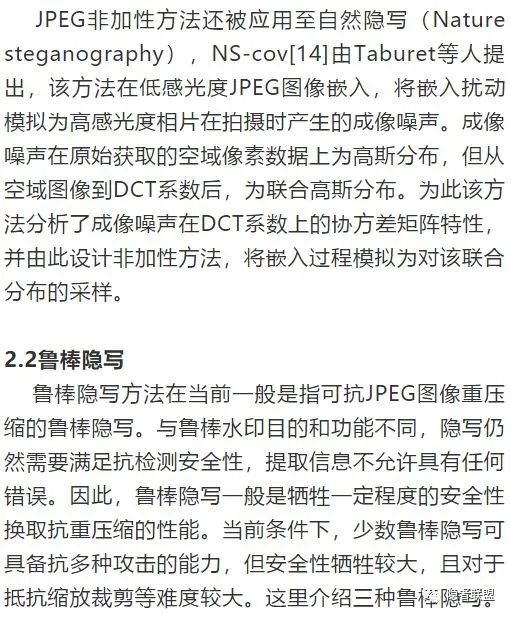

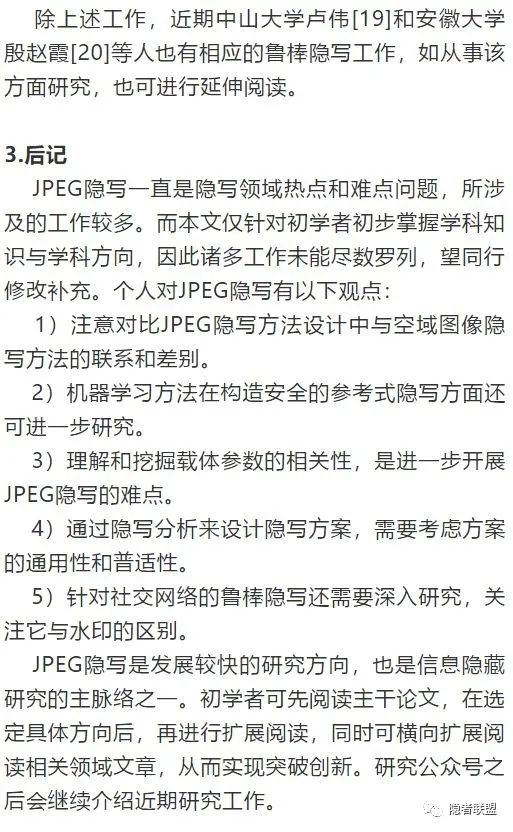
参考文献:
[1]A. Westfeld, “F5 - asteganographic algorithm: high capacity despite better steganalysis,” International Workshop on Information Hiding, LNCS, vol. 2137,2001.
[2]Kim Y , Duric Z , Richards D S . Modified matrix encodingtechnique for minimal distortion steganography. Springer Berlin Heidelberg,2006.
[3]V. Holub, J. Fridrich, and T. Denemark, “Universal distortion function for steganography in an arbitrarydomain,” EURASIP Journal on Information Security, vol.2014, no. 1, pp. 1-13, 2014.
[4]L. Guo, J. Ni, W. Su, C. Tang and Y. Shi, "UsingStatistical Image Model for JPEG Steganography: Uniform EmbeddingRevisited," in IEEE Transactions on Information Forensics and Security,vol. 10, no. 12, pp. 2669-2680, Dec. 2015
[5]L. Guo, J. Ni, and Y. Shi, “Uniform embedding for efficient JPEG steganography,” IEEE Transactions on Information Forensics and Security, vol. 9,no. 5, pp. 814-825, 2014.
[6]W. Su, J. Ni, X. Li and Y. Shi, "A New DistortionFunction Design for JPEG Steganography Using the Generalized Uniform EmbeddingStrategy," in IEEE Transactions on Circuits and Systems for VideoTechnology, vol. 28, no. 12, pp. 3545-3549, Dec. 2018
[7]X. Hu, J. Ni and Y. Shi, "Efficient JPEG SteganographyUsing Domain Transformation of Embedding Entropy," in IEEE SignalProcessing Letters, vol. 25, no. 6, pp. 773-777, June 2018
[8]Z. Wang, X. Zhang, and Z. Yin, “Hybrid Distortion Function for JPEG Steganography,” Journal of Electronic Imaging, vol. 25, no. 5, pp. 050501, Sept.2016.
[9]Z. Wang, Z. Qian, X. Zhang, M. Yang, and D. Ye, “On Improving Distortion Functions for JPEG Steganography,” IEEE Access, vol. 6, pp. 74917-74930, Dec. 2018.
[10]W. Li, K. Chen, W. Zhang, H. Zhou, Y. Wang, and N. Yu, “JPEG Steganography with Estimated Side-information,” IEEE Trans. Circuits and Systems for Video Technology, vol. 30, no.7, pp. 2288-2294, July, 2020.
[11]W. Li, W. Zhang, K. Chen, W. Zhou and N. Yu, “Defining Joint Distortion for JPEG Steganography”, Proceedings of the 6th ACM Workshop on Information Hiding andMultimedia Security, pp.5–16}, IH&MMSec "18
[12]Y. Wang, W. Li, W. Zhang, X. Yu, K. Liu and N. Yu,"BBC++: Enhanced Block Boundary Continuity on Defining Non-AdditiveDistortion for JPEG Steganography," in IEEE Transactions on Circuits andSystems for Video Technology, doi: 10.1109/TCSVT.2020.3010554.
[13]Y. Wang, W. Zhang, W. Li and N. Yu, "Non-Additive CostFunctions for JPEG Steganography Based on Block Boundary Maintenance," inIEEE Transactions on Information Forensics and Security, vol. 16, pp.1117-1130, 2021, doi: 10.1109/TIFS.2020.3029908.
[14]T. Taburet, P. Bas, W. Sawaya and J. Fridrich, "NaturalSteganography in JPEG Domain With a Linear Development Pipeline," in IEEETransactions on Information Forensics and Security, vol. 16, pp. 173-186, 2021,doi: 10.1109/TIFS.2020.3007354.
[15]Yi Zhang, Xiangyang Luo, Chunfang Yang, Dengpan Ye, FenlinLiu. A JPEG-compression resistant adaptive steganography based on relativerelationship between DCT coefficients. Proceedings of the 10th InternationalConference on Availability, Reliability and Security. 2015:461-466.
[16]F. Huang, J. Huang, and Y. Q. Shi, “Detecting double jpeg compression with the same quantization matrix,” IEEE Transactions on Information Forensics and Security, vol. 5,no. 4, pp. 848–856, 2010
[17]Z. Zhao, Q. Guan, H. Zhang and X. Zhao, "Improving theRobustness of Adaptive Steganographic Algorithms Based on Transport ChannelMatching," in IEEE Transactions on Information Forensics and Security,vol. 14, no. 7, pp. 1843-1856, July 2019
[18]S. Li, and X. Zhang, “TowardsConstruction Based Data Hiding: From Secrets to Fingerprint Images,” IEEE Trans. Image Processing, vol. 28, no. 3, pp. 1482-1497, March,2019.
[19]W. Lu, J. Zhang, X. Zhao, W. Zhang and J. Huang,"Secure Robust JPEG Steganography based on AutoEncoder with Adaptive BCHEncoding," IEEE Transactions on Circuits and Systems for Video Technology,doi: 10.1109/TCSVT.2020.3027843.
[20]Z. Yin and L. Ke, “Robustadaptive steganography based on dither modulation and modification withre-compression” IEEE Transactions on Signal andInformation Processing Over Networks, accept , arXiv, 2021,https://arxiv.org/abs/2007.08301v1.
[21]Yi Zhang, Xiangyang Luo, Yanqing Guo, Chuan Qin, Fenlin Liu.Multiple robustness enhancements for image adaptive steganography[J]. IEEETransactions on Circuits and Systems for Video Technology, 2020, 30(8):2750-2764.
(本文为作者原创,未经许可,不得转载到其它平台)
编者:复旦大学 钱振兴
声明:本文来自隐者联盟,版权归作者所有。文章内容仅代表作者独立观点,不代表安全内参立场,转载目的在于传递更多信息。如有侵权,请联系 anquanneican@163.com。
